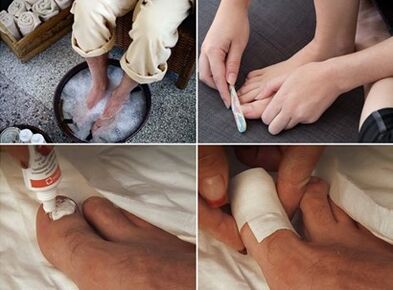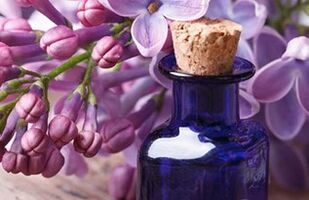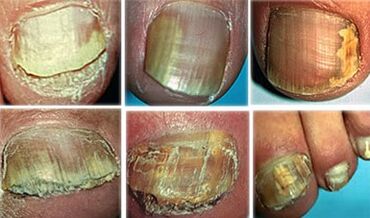Onychomycosis is a disease in which a fungal infection affects the surface of the nail plate. There are 3 most common pathogens identified in the analysis: yeast-like fungi, molds, and dermatophytes.
Why do mushrooms appear?
The mushroom itself cannot be seen. There are always certain triggers for the disease, for example:
- Use of household items with fungal spores. If one family member has onychomycosis and others use towels, slippers, or socks, the risk of infection is very high.
- Visiting public places with a flow of people. Saunas, baths, swimming pools, solariums, showers, fitness clubs, beaches - all these places can be a place of onychomycosis.
- Continuous high temperature and humidity of shoes. Fungal infections often infect office workers and military personnel who have to spend all day in their shoes. Lack of air, cramped space and uncomfortable shoe models cause sweating, blood stasis and consequent onychomycosis.
- Reduced immunity. If the immune system is weakened by the disease, onychomycosis may appear after taking antibiotics and other causes.
- Age of man. In children, the fungus is not visible due to its physiological characteristics - the infectious pathogen takes some time to take up space and multiply. And children's nails grow very quickly, so there is no time for onychomycosis to develop. Often affects adults and almost always older and older people. Nail plates grow very slowly, so it is especially difficult to get rid of fungus on old nails.
How to understand that nails are affected by mycosis?
When the nail plate changes in any way, this indicates possible problems. Symptoms of onychomycosis will be the following conditions:
- crack between fingers;
- yellowing of the nail plate;
- thickening of the skin;
- separation of the nail without mechanical cause;
- burning and itching;
- inflamed nail layer;
- Thinning or thickening of the nail.
A healthy nail should be pink, shiny and smooth.
Fast and effective ways to treat fungus at home
The fight against onychomycosis usually takes at least a month. The sooner you start treatment, the sooner you will get rid of the disease. You can use traditional medicine or use pharmaceutical drugs. But it is better to combine time-tested tips and effective drugs - this will allow you to quickly forget about the fungus.
Preparing the nail plate for treatment
Often a simple application of antifungal drugs does not give the desired result. This is due to the inability of the drug to penetrate into the thickened nail due to the fungus.
Before starting treatment, the nail plate affected by onychomycosis should be removed. There are several ways to do this:
- Steam your feet in hot water. It is important to keep the water temperature high enough (up to 50 degrees) for about half an hour. To do this, you can pour dry mustard into the water and constantly add new parts of the hot parts. Next, you need to cut the enlarged part of the steamed nail plate and reduce the thickness of the nail itself with a document with low abrasiveness (100-150 grit).
- Get an antifungal cream from a drugstore. This tool is from the budget segment, but its activity can replace the removal of nails with surgery or laser. The glue contains urea, which softens the nail plate without feeling pain and discomfort, and then cut or removed with a scraper. The drug is applied to clean and dry nails affected by onychomycosis and a patch is applied crosswise. It is important not to remove it for about 2 days. With an advanced stage of the fungus, several such procedures may be required.
- Useantifungal cream. The main component is urea or urea. Apply the cream on steamed but towel-dried nails, seal with a plaster and leave on for 3-4 days. Then take a warm bath again, remove the softened pieces.

It is pointless to treat onychomycosis without removing the affected nail or piece.
Steam baths
High temperatures and water soften the nail plate. It is easier to manage and remove patient debris when needed. You should steam your feet well before any medical procedure. You can do this in the following ways:
- Mix 4 tablespoons of iodized salt, 200 g of soda and a few drops of lavender essential oil in warm water. Keep your feet down and keep them cool. Then wash and dry with a clean towel.
- Gently rub a resin soap. Add 3 tablespoons of the resulting "powder" to a glass of warm water, a glass of soda, steam your feet for 10-20 minutes. It is better to use such a bath as a preparation before the next treatment procedure.
Cleaning products

If it is not possible to apply a compress or ointment for a long time, it will help to remove a painful nail. Onychomycosis requires a continuous and complex treatment, so sometimes you can use folk recipes:
- Soak a cotton ball in apple cider vinegar, generously lubricate diseased nails. The fungus loves an alkaline environment, so its oxidation prevents infection.
- Mix 2 tablespoons of calendula and lilac flowers, pour a glass of vodka and infuse for at least a week. Apply to painful nails three times a day.
Wraps and compresses
Compresses have a good effect on nail health, eliminate infectious diseases.
- Pour celandine oil on a cotton pad. Put it on the infected nail, wrap it lightly, put on socks and walk all day. After that, you can treat the plate with hydrogen peroxide or iodine.
- Grate a few cloves of garlic, add 1 teaspoon of any vegetable oil. Finally, apply the oil to the diseased nail plates, apply a bandage and put on socks. Leave for a few hours. If there is a burning sensation, take a compress and wash your feet with tar soap.
Creams, pharmaceutical solutions
Antifungal drugs are effective against fungal infections. Often a manufacturer's products include both liquid products and different creams that contain the same active ingredient.
Tablets and capsules for oral administration
Treatment of a fungus is sometimes not possible without "internal" exposure. Taking antifungals accelerates recovery.
How to treat advanced nail fungus

If you start onychomycosis, folk remedies become ineffective. In this case, you will definitely need to consult a mycologist or at least a dermatologist. Most likely, it will prescribe the following procedures:
- Determination of the pathogen. Generally, a cut is taken from the board, less - a piece of nail. These materials are sent for microscopic examination.
- Taking medication. After the appointment of the parasitic fungus, internal antifungals and topical drugs are prescribed.
- Removal of the affected part of the nail or the entire board. If less than half of the area of onychomycosis is affected, a medical pedicure is prescribed. If the entire nail plate is infected, it may need to be surgically removed.
Methods of iodine treatment
The causative agent of onychomycosis feeds on keratin in the epidermis. The harmful effects of iodine on the fungus are the adhesion of these proteins and the death of the infection. Re-application of iodine to the affected area practically eliminates parasitic pathogens. The drug has an antiseptic effect, which prevents the recurrence of the infection.
Iodine is a powerful drug. Can only be applied to affected nail fractures. Contact with healthy skin can cause inflammation and severe burns.
In the advanced stage of onychomycosis, iodine can help as an additive in the steam bath. Pour all the preparation into a glass of warm water, lower your feet for 20-30 minutes. A found antiseptic effect will be felt not only on the nails, but also on the skin, where the spores of the infection may be present. After the procedure, you can treat your feet with hydrogen peroxide.
Initially, you should apply iodine to the nail plate every few days using a cotton swab. When the area under the affected area starts to burn after about a week, this will be a good result showing a successful treatment.
You can also add 3 drops of iodine to 2 tablespoons of olive oil for an antifungal and caring effect. Heat this mixture in a water bath, apply to sore nails and put clean socks on top. Leave on overnight, wash your feet with soap in the morning.
Iodine is one of the most budget-friendly drugs with high efficacy. Continuous use is possible for months. If there are no results, you should change the type of therapy or consult a doctor.
Onychomycosis is successfully treated with complex local and systemic therapy. The combination of pharmacy and folk remedies will allow you to defeat the fungal infection in 1 month.





























